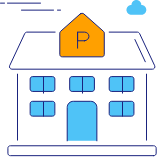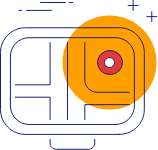Not all blockchains have the same importance in the fast changing. Today’s blockchains are several commonly used trade-offs. When you grow an entire chain, you run the risk of fragmentation or loss of decentralization. In order to achieve decentralization, you must sacrifice the speed and efficiency of a network. A new generation of platforms which is being led by Flow, is starting to make a difference in this.
Flow offers a captivating concept of the future for cryptocurrency for consumers. It is built upon the principles of high performance, accessibility, as well as energy efficiency. The Flow transaction uses less power than one dozen Google Searches, making it among the most energy-efficient blockchain options available. It’s a fully-functional consumer network, always online, and with full access to both developers and users alike.

Built to Scale, without Sacrificing Blockchain Principles
Flow is a different kind of blockchain due to its ability to scale without sharding, a challenge which most blockchains haven’t solved. While sharding is beneficial for scaling but it tends to fragment the network and makes it difficult for developers to build applications that seamlessly interact with each other. Flow avoids this by pioneering an architecture that is multi-role, which differentiates issues across specific node types compute, consensus collection, and execution all working together within an open blockchain system.
Flow can handle a huge volume of transactions, with the decentralization of transactions, and still maintain security. Separating builders and proposers, and using a protocol-based stack of data makes sure that transactions are handled in a fair way.
The Reason Flow is a Perfect Match for Consumer Crypto
What sets Flow apart isn’t just its technical achievements it’s the fact that the platform was designed from the ground up for consumer crypto applications. No matter what you’re building, social platforms NFTs, decentralized marketplaces or even decentralized marketplaces, Flow is designed to build experiences that feel intuitive, fast and simple.
Flow allows apps to expand up to millions of users, without degrading performance. Network upgrades can also be carried out without breaking existing apps, a great benefit for products aimed at consumers. Flow is, short-hand, is future-proofed to meet the needs of Web3.
Looking for the best Smart Contract Language
The most effective smart contract languages are crucial to the development of the next generation of blockchain-based consumer apps. On Flow the language used is Cadence, a resource-oriented programing language designed specifically to provide security, clarity and user-friendliness.
Cadence was designed to help developers write predictable and secure smart contracts that are secure and predictable. This can lower barrier to entry and reduce costly vulnerabilities and bugs.
Cadence is the better choice for developers with traditional backgrounds as compared to Solidity. In addition, because the Flow architecture prevents any fragmentation, smart contracts developed in Cadence are inherently more interoperable and compatible across the Internet, a huge advantage in the expanding Web3 ecosystem.
Blockchain and consumer crypto: The Future is Bright
As more and more companies, creators and developers move into the Web3 market, the need for robust, durable and efficient blockchain infrastructure for consumers will only increase. Blockchain Flow, an innovative architecture that is built specifically for use by consumers is at the top of the line. It’s not a derivative or fork from the blockchains that exist.
Flow is eco-friendly, thanks to its design and proven scalability, as and a growing developer community and a language that allows for smart contracts, offers an idea of what the future of Blockchain may look like. A time when widespread adoption is now feasible.














